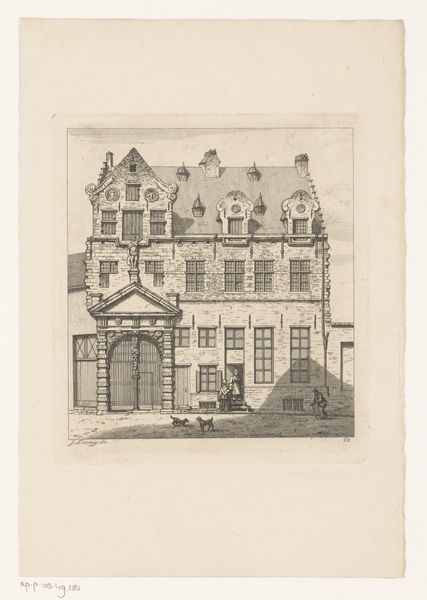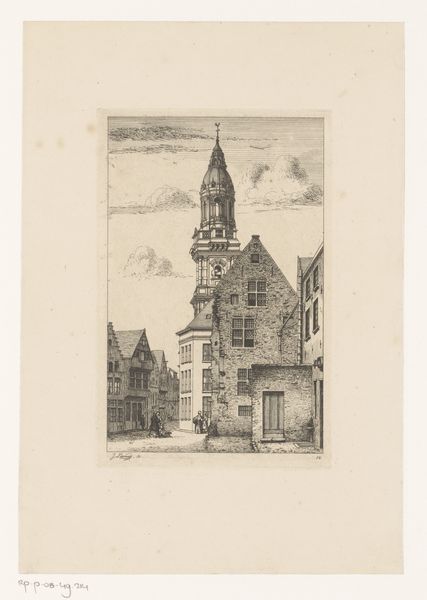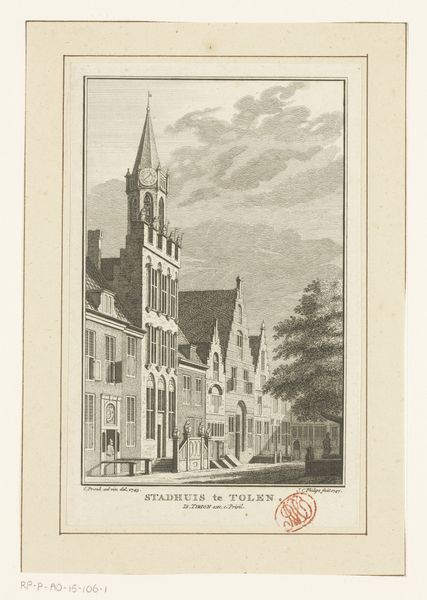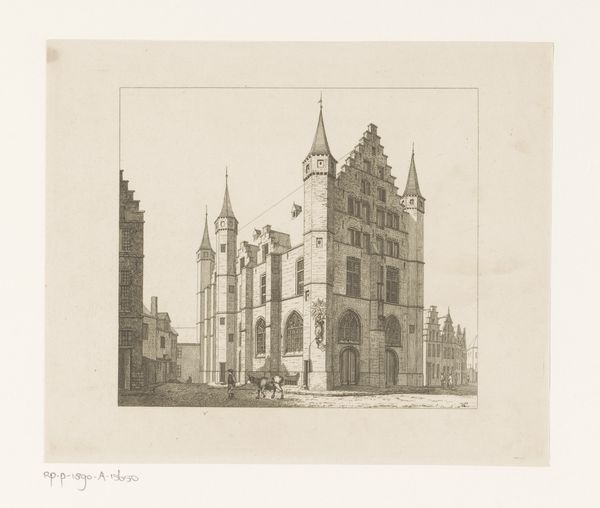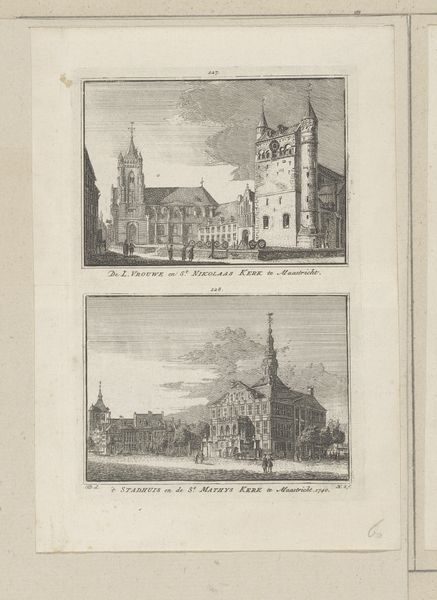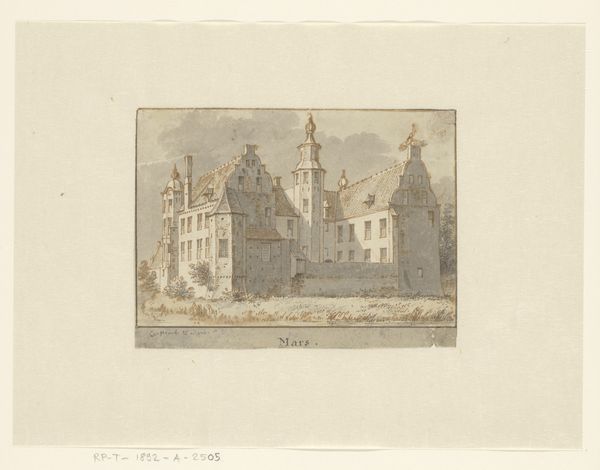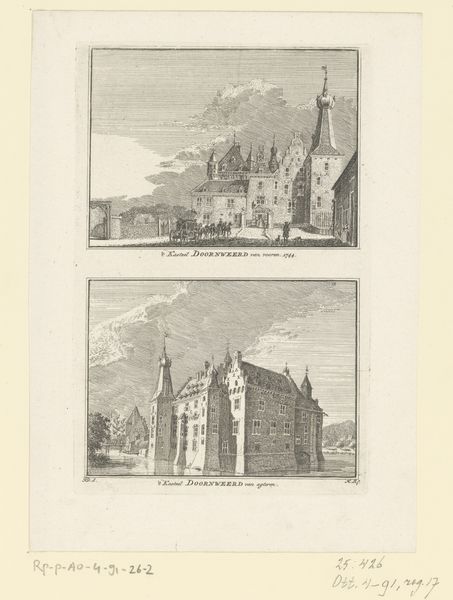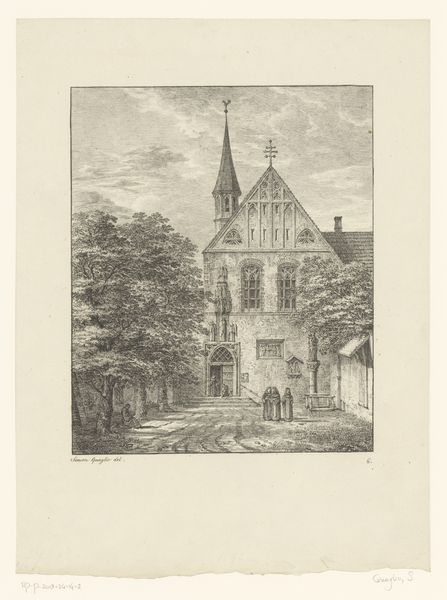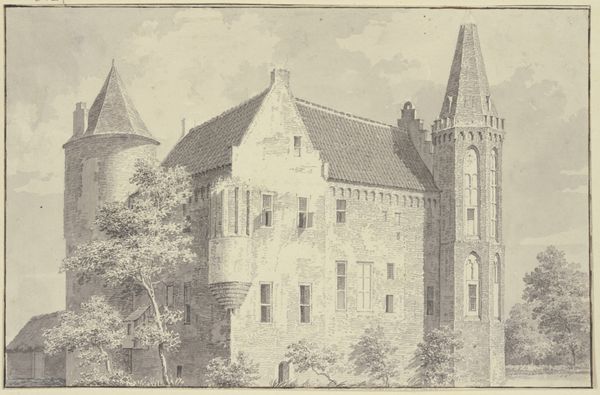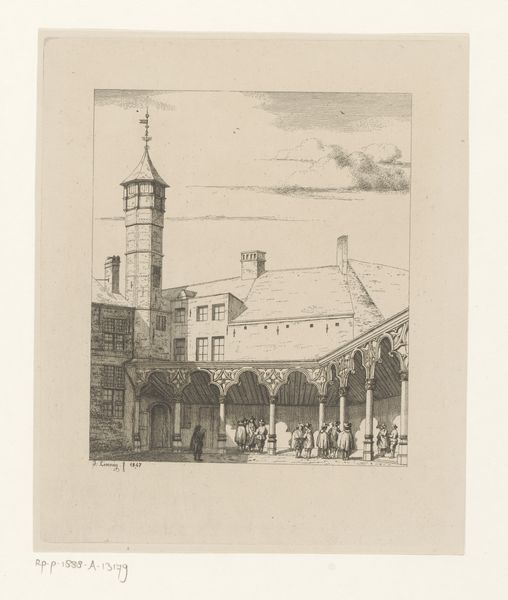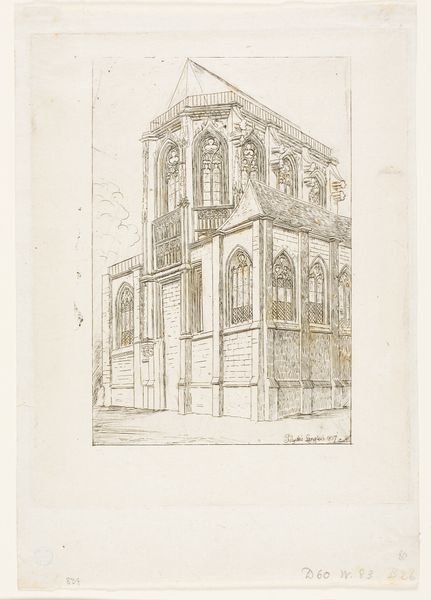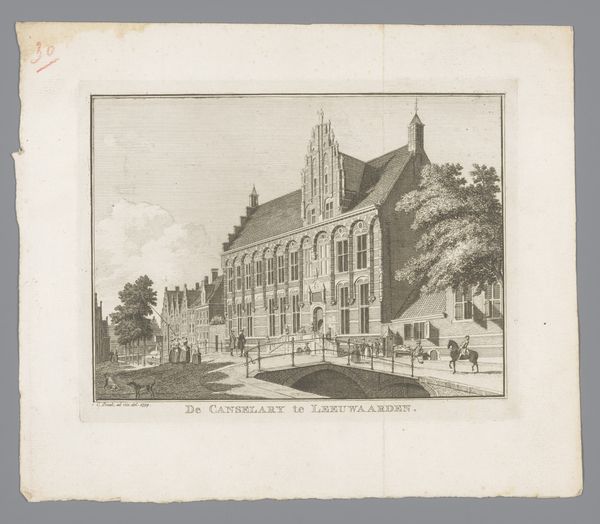
Dimensions: height 194 mm, width 148 mm
Copyright: Rijks Museum: Open Domain
Editor: Here we have Jean Théodore Joseph Linnig's 1868 etching, "Gezicht op het Vleeshuis in Antwerpen" – that's "View of the Meat House in Antwerp." It's a beautifully detailed cityscape, but it feels strangely quiet and a bit somber, despite all the architectural detail. What strikes you when you look at it? Curator: I’m drawn to how Linnig positions the Vleeshuis within a bustling, but almost ghostly, cityscape. Considering its original function as a guildhall for butchers, the building was a central economic and social hub. Linnig's choice to depict it in 1868, well after its prime, invites us to reflect on shifting power structures, on who and what gets remembered in urban spaces. Do you think the 'somber' mood you mentioned could be interpreted as a lament for a lost, or at least altered, societal order? Editor: That’s a fascinating perspective. I hadn't considered the building's original function. It makes me wonder about the people who once worked there, their stories now faded. Could Linnig be commenting on the changing role of guilds in a rapidly industrializing society? Curator: Exactly. The deliberate detail, juxtaposed with the hazy, almost dreamlike quality of the etching, raises crucial questions about historical memory. Were these spaces really accessible to the general public? Whose history is being valorized? Moreover, who gets to tell it, or etch it, for that matter? Editor: So, it's not just a pretty cityscape, but a social commentary. I will consider these spaces with renewed appreciation moving forward, and remember that there may be lost legacies that these spaces leave out. Thank you for such insight. Curator: And thank you, I'm pleased to provide a deeper appreciation. I now have to consider which lost or marginalized groups I can try to support moving forward!
Comments
No comments
Be the first to comment and join the conversation on the ultimate creative platform.
